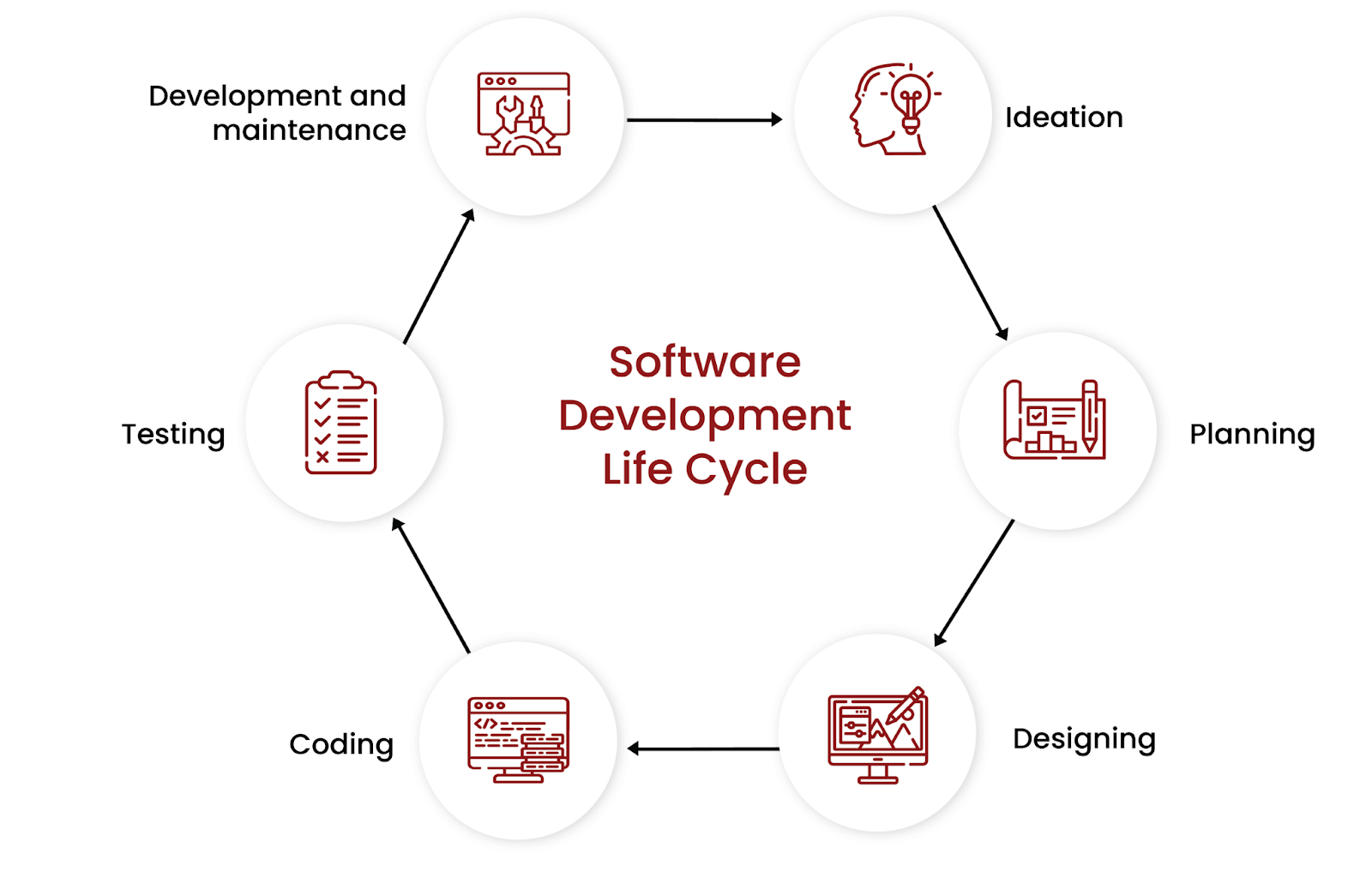
A Quick Guide To In-House Or Outsourced Development
How would you determine whether to outsource a software development project or try and work on it in-house?
This could be a difficult choice to consider particularly if you have no previous experience with offshoring. Nonetheless, an increasing number of businesses are opting to outsource and are reaping the rewards.
To keep up with rising market demands and expectations, software development outsourcing is frequently relied upon.
Outsourcing Software Development has become an industry fad that is expected to grow in the coming years. And the rationales for offshoring are changing as well.
Historically, businesses would choose to outsource software development primarily for cost savings. This reason is still relevant today, although it is no longer the key objective. The tactic, instead, is focused on gaining access to the best tech skillsets and cutting-edge technologies.
As per a recent C – suite study conducted by Harvey Nash with KPMG, almost 50% of the Engineering Heads are subcontracting to gain access to top talents while the idea of potential savings is becoming less of a primary objective. Furthermore, a major chunk of these C-Suite Executives intend to significantly boost their subcontracting expenditure with time.
Now, about our Subject-of-Concern (In-House Team vs Offshore Team), only you can answer who among an in-house or an offshore SD Team could serve your purpose.
With so many factors at stake like individual interests, pros & cons to be considered – the only way to think about this is – what is best for you?
You’re best placed to know about what your bandwidth is, what are your limitations are, and if you have any budget constraints? And based on your judgement, you can decide what could be the right fit for your project.
And on that note, let’s check out a realistic guideline that’ll help you weigh some of the most crucial variables in your decision-making process. But before that we have an interesting comparison for you:
Establishing an in-house team may divert your attention away from your core biz :
- You’d be required to choose between devoting all of your tempo and energy to your core business activities and allocating a portion of those resources to building and managing a software development team.
- If developing this software is central to your business, then all of these investments may be worthwhile.
- Otherwise, you’d need to give it some thought.
Development costs
- Hiring a regular developer in Europe may cost you at least €45,000 per year, while in the U.S, the same could cost you around $85,000.
- Besides additional costs could increase this figure by almost three times. However, these costs could be recouped over time if your software forms the heart of your revenue and business model.
- On the other hand, in regions like Europe and the US, the average rate for outsourcing is only around $40-$80 per hour, per person.
- This rate could significantly come down in other countries like India where any additional costs are also kept to a minimum.
Level of Competence and Ease of Access
- Your Base Location plays a vital role here.
- The number of developers around your locale are bound to be in limited numbers.
- And the level of experience could also vary significantly depending on the individual.
- However, offshoring provides you access to a global talent pool.
- Agencies are more likely to have substantial Project Experience and Domain Expertise.
- But experienced and talented outsourcing agencies could charge you with higher rates for top quality.
Governance
- An In-house employee’s onboarding necessitates a formal intro ceremony and training.
- It takes some effort but the results are well worth it.
- Although you’d need to charge someone with the supervision of the team.
- And there will be no time zone differences with an in-house team.
- Meanwhile, Offshore teams are likely to integrate new employees, are autopoiesis, and are self-sufficient more often than not.
- But chances are that they are less likely to treat your project as their own.
- You may need some time to find a committed partner.
- Time zone differences may necessitate you to define a unique workflow for your project and team.
Recruiting time
- Typically you’d need roughly 45 days to hire an in-house coder where you would need to take care of the recruitment-related bills.
- On the other hand, finding a subcontracting company takes about 2-5 weeks, depending on the nature of your requirements.
- Here, your time is the most expensive item that just can’t be overlooked.
Development speed
- The speed of developing your application in-house could be restricted by the number of people in your team and the time it could take to onboard new resources.
- But Outsourcing allows for the rapid formation of temporary teams, which may result in faster development.
Scalability
- Recruiting and laying off people from your team is generally a time-consuming and difficult task.
- Besides there are some niche skills that are nearly unlikely to be found in your base locale.
- Offshoring to a software development agency is pretty much similar to enjoying an on-demand service.
- You may modify the contract as per your project’s landscape.
- One of the most significant benefits of outsourcing is its ability to scale on demand.
Interaction
- An In-house production team would enhance the overall match-up in terms of culture and language within your team.
- However, in-person communication, although faster and easier, is more vulnerable to distraction and needless jabber.
- Communicating over the internet is less natural, but it reduces clutter.
- While Outsourcing to other countries might result in linguistic and cultural challenges.
- Hence, finding high-quality collaborators is critical in such situations.

How is software development typically carried out?
Whatever the complexity of a software product, it must be adaptable, easy to maintain, and upgradeable. Here are some Best Practices that you could refer to.
This can be accomplished by pre-planning each step, from brainstorming to maintenance.
- The phases of the software development life cycle are as follows :
Core Objectives
Each project begins with an idea. Ideas, on the other hand, do not appear out of an instant.
You must first identify a business need and then consider how to meet it.
In most cases, the project initiation phase consists of the following steps :
- Carrying out a feasibility study to assess the likelihood of successful project completion and to mitigate potential risks.
- Establishing the project’s scope.
- Identifying deliverables – Identifying stakeholders.
- Creating a business case that justifies the project’s scope and deliverables.
- Creating a statement of work that specifies the project’s objectives, scope, and deliverables.
Organizing
The following elements are typically included in the planning phase :
- Developing a project plan.
- Assembling your team.
- Defining each team member’s role.
- Estimating the budget.
- Ensuring that everyone has the necessary resources, both hardware, and software.
- Foreseeing and mitigating risks.
Making sure that the necessary development tools, platforms, and communication channels are all available and accessible is a critical component.
Essentially, you want to ensure flawless daily processing while not depleting resources or interfering with ongoing development.
Another pillar of your success will be well-organized documentation. Documentation consistency at all stages is critical for maintaining proper communication, work processes, reporting, and facilitating interaction among team members.
It is strongly advised that you create a software requirements specification to summarize everything done during the planning stage.
An SRS is a document that specifies what a product should do and how it should be developed.
Layout
Layout or Design is an essential part of the lifecycle of a software project. It could include the following items :
- Architecture — the overall design of the product.
- User interface — how users interact with the product and how it responds.
- Platform definition — the platforms on which the product will run. (Android, iOS, etc.)
- Communications — how the product will interact with other assets (the central server, etc).
- Security — measures to prevent data leaks in the app, such as SSL encryption and password protection.
- The design phase may also include the creation of a prototype, which is a visual representation of how the project will look and function.
Programming
This stage, which serves as the SDLC’s backbone, is all about ‘translating’ the product’s design into actual software. While a single developer can complete a small project, for larger projects, all tasks are divided among team members based on their areas of expertise.
As a result, a front-end developer creates the product’s UI and its communication with the server, while database administrators enter all necessary data into the database.
It is critical to ensure that the code meets the project’s requirements and exceeds the stakeholder’s expectations. It’s no surprise that this is the longest stage.
However, if the ideation and planning have been meticulously completed, it is also the simplest. This phase’s goal is to create a working product as well as a source code document.
QA Analysis
When the development phase is finished, it is time for QA experts to review it to ensure that it meets all of the requirements.
Several types of testing are performed on the software for this purpose :
- Functional testing, which ensures that the software performs its stated functions in the manner that users expect.
- Performance testing to determine how the software performs under high load.
- Security testing to ensure that the software is free of risks and threats that could result in data leakage.
- Usability testing to determine whether or not the software is intuitive and responsive.
Once an error has been identified and corrected, developers send the software back to the QA team for re-testing.
This process is repeated until the entire product is free of bugs.
Application Release And Ongoing Maintenance
When the testing phase is completed successfully and there are no discernible bugs or other flaws in the product, it is released to the market for beta testing.
The support team collects user feedback during beta testing, and if any problems arise, the development team resolves them. Only after the product has been fine-tuned in response to real-world feedback is it released to the public.
Its life cycle does not end there: the product is constantly updated to improve performance and meet the ever-changing needs of its users.
So, when should you think about establishing an in-house software development team?
- You have the resources to find and hire the development personnel needed to build your product.
- A development team typically consists of a PO, a senior architect, a couple of developers, an interface designer, and a software tester. So, do you have the time, energy, and resources to devote to the recruitment and hiring of this team? Do you have the financial means to keep them on your team? You should also keep in mind that hiring top-tier talent necessitates a significant amount of recruiting time and effort, regardless of whether the HR Team handles the recruiting or you do it yourself.
- You want complete control over every aspect of your software project. When you develop in-house, you have complete control over all aspects of the project.
- You want in-house staff to handle all of your post-launch development needs. The launch is just the beginning. You will need to maintain your new product after it has been launched. This includes releasing updates and fixes, assisting customers, and laying the groundwork for your product’s long-term success.
- You’re ready to compete for top design and development talent — highly sought-after talent. The competition can be fierce because software design and development skills are in high demand across industries and geographies. Are you prepared to compensate them and offer competitive benefits to attract top-tier professionals?
And when should you think about hiring an offshore partner to help you outsource?
- You’d prefer a pre-assembled team with everyone you’ll need for the project. The majority of outsourcing partners can supply you with everything you’ll need for product development.
- You don’t have the time to oversee the entire process. Your time is freed up because you are delegating the majority of the work to your outsourcing partner. Your project is completed while you focus on running your business and achieving other strategic goals. If you value your time, this can be a significant consideration.
- You want a team that can guarantee prior software development experience on similar projects. In general, outsourced teams will have product development experience from top to bottom. In particular, they are likely to have engineering experience developing products similar to yours. They are also likely to have prior experience working together.
- You don’t want to risk having to scramble at the last minute to find the experts you require. One of the most important value propositions of outsourcing partners is the ability to quickly access expertise in nearly any technical stack.
- You would benefit from collaborating with a partner and project manager who can guide you through the process. If you lack significant product development experience, aren’t technically savvy, or simply want to ensure you’re making the best decisions possible along the way, an outsourced team can be a huge asset to your process.
- You only require assistance with one or more phases of a project, or the project will be completed in a short period. Hiring someone in-house would be prohibitively expensive for such brief periods.



Audrey
I have learnt some useful tips from this post.
Joseph Hernandez
When we outsourced our software development, we gained access to a global talent pool and cutting-edge technologies, which greatly enhanced our project. It required significant resources and recruiting efforts, but we were able to maintain long-term success and cater to our post-launch development needs effectively. Ultimately, the choice between in-house and outsourced development depends on your specific needs, available resources, and desired level of control.